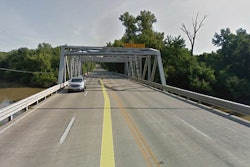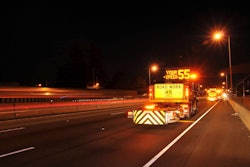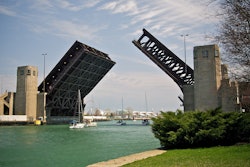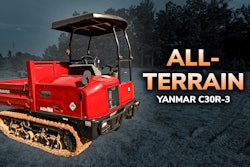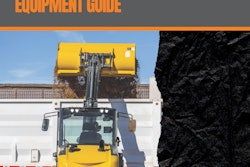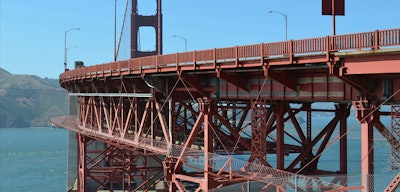
Minnesota-based Danny’s Construction has partnered with Shimmick Construction, a prominent west-coast heavy civil contractor, to build the Suicide Deterrent System, also known as the Safety Net, to prevent people from taking their own lives by jumping off the Golden Gate Bridge.
At its completion in 2021, this will be the largest application of a suicide net deterrent system on a bridge in the United States, according to the Golden Gate Bridge Highway and Transportation District.
This $211 million project consists of a near full bridge length stainless-steel cable net system on both sides of the bridge along with a wind retrofit on the west side of the main suspension span, according to Danny’s Construction, which is located in Shakopee, a city in the Twin Cities metro area.
Of the overall cost, $204 million is dedicated to construction.
Each year, on average, about 30 people their lives by jumping off the iconic bridge, and they come from around the world to do it.
Hundreds more are stopped from harming themselves through the efforts of the Golden Gate Bridge District Patrol, California Highway Patrol, other law enforcement, and citizen intervention, according to the Highway and Transportation District.
The Safety Net is a hard metal platform located two stories below the sidewalk. Jumping into it will result in significant bruises, sprains and possibly broken bones, but the system is aimed at saving lives.
“While this project is unique due to its vast scale and maritime location, it is modeled on similar systems, which have been installed in various locations around the world for almost two decades,” according to the agency.
Engineers not only designed the net to minimize impacts to bridge views and appearance, it’s also been designed to minimize interference with the daily operations and maintenance of this iconic structure.
The net will be placed 20 feet below the sidewalk, extending 20 feet out from the bridge. This design was chosen through a process that included public input. The selected design allows open, scenic vistas to remain while preventing anyone from easily jumping to the water below, the agency says.
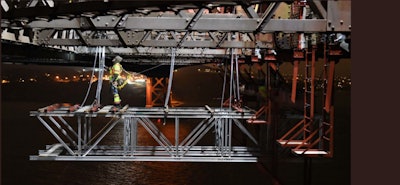
The net’s new steel support struts are tube sections. The support struts attach to the vertical members of the bridge stiffening truss and are spaced every 50 feet, the same spacing as the suspension bridge suspender ropes. After the support struts are installed, a horizontal stainless steel wire rope net will be stretched across those support struts, the agency says.
The orange color and spacing of the support struts are designed to allow the new members to blend into the existing structure in order to minimize the visual impact of this new element.
Due to the new net system, the existing maintenance travelers will need to be replaced, Danny’s Construction says.
According to Danny’s Construction, here are details on some of the primary scopes of work:
- Furnish and install 385,000 square feet of stainless-steel net along most of the 1.7-mile-long bridge.
- Furnish and install approximately 600 tons of steel to support the new stainless-steel cable net.
- Remove the existing 4 maintenance travelers on the suspension spans.
- Furnish and install 12 new battery powered maintenance travelers on the suspension spans, including electrical work and multiple charging stations.
- Furnish and install 1,100 tons of rail girders to support the new maintenance travelers.
- Remove thousands of existing rivets and replace with high strength bolts.
- Field drill thousands of holes in the existing bridge.
- Furnish and install 425 tons of wind retrofit steel on the west side of the main suspension span involving the replacement of the existing guardrail and installation of new wind fairings.
- Spot blast, clean, and paint the existing bridge where existing lead-based paint is disturbed from removal or installation activities.



